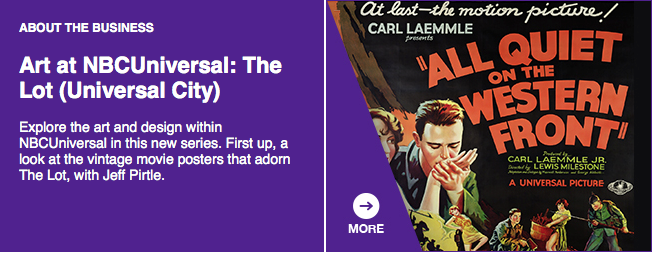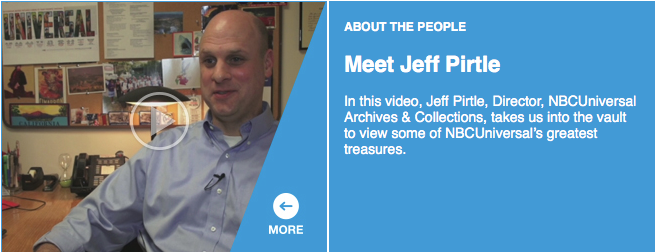- About Archives
- About SAA
- Careers
- Education
- Publications
- Advocacy
- Membership
This page features recommendations and success stories submitted by BAS members for you to consider and potentially reapply or adapt into your own organization.
If you have success story that you'd like to contribute, please send it to bascontent@gmail.com.
Link to the BAS Advocacy Toolkit page.
Using iMovie on my Mac at home, I created a compelling four minute video aimed at inspiring our employees and informing them of the capabilities and assets that were to be found in the Archives. The video was sent to employees via email with the explicit instructions, "Take a break and watch the attached video. Contact the Harley-Davidson Archives to put our history to work for you. Our story doesn't belong only to the past.". I loaded the content and the videos, did the editing, title screens, found the font for free on the internet, added the music, etc. Other than my time, the cost for doing this was $0. With today's technology it's a myth that you need a big budget to do something like this. Watch the video here.
The response was very positive - people loved it. There were even those who wanted to use it publicly, and people continue to refer to it as a benchmark. I've heard that Marketing leadership has even urged the creation of a video that is "more like that video Bill Jackson did."
Unfortunately though the message of "You're a part of Harley history too" was missed and it did not seem to generate interest in using more archival film and video. My key learning from this experience was that when we do something like this again in the future, we have to be far more explicit about what we're trying to convey.




We have a weekly internal newsletter at NBCUniversal and this past issue featured two pieces that include Jeff providing informational videos. The first one focuses on our vintage poster collection around the lot, and the second appeared on our internal video channel. In the second one, Jeff provides a bit of background about himself and what the Archives does for the company. Both have given us great exposure and reminds employees of our purpose and existence.


I am part of the Heritage and Information Services for the Durst Corporation. Though I've been here only a year, we have implemented what we call "Lunch and Learn" sessions for employees. It began in October to coincide with Archives Month. Since then we have held two more sessions, and plan to have one for at least once a quarter.
In the Lunch and Learns, we give an overview of our department and roles. Depending on the audience (new employees, for example), we will include company history using materials from our archives as content. All presentations so far have included information about archives in general, other corporate archives, and professional developments. For subsequent sessions, we provide updates on new acquisitions or projects (showing visual examples through presentation, video, and replicas) and really stress the fact that our archives not only hold physical items, but that we have a growing digital archive as well.
The result of our efforts has been the creation of awareness in our employees that they may have materials of enduring value. This has resulted in acquisition of seminal items, as well as increasing role in the standardization of documents as they are created (which means documentation and provenance!). Of course, food is usually what lures them into the Lunch and Learns, but the content of the presentations is what makes them stay.
I think they are successful - each session has had roughly 30-50 people in attendance. We also have Flashback Friday post every week on our company intranet site, documenting current department activities and subjects relating to our collection.
If you have any questions, please do not hesitate to contact me.
As is the case with many fast-paced, forward-looking business cultures, the concept of what materials might best be saved for archival posterity is not often a "front of mind" priority with the workforce. In order to create a strong identity for myself as the divisional archivist and the developing Disney Consumer Products Archives, I launched a campaign in 2006 called "Bring Out Your Dead", inspired by the well-known scene from Monty Python's "Holy Grail." The timing was convenient, as several teams were relocating their offices and in a purge mode, so when my team and I walked the floors of their soon-to-be-vacated building with our red Radio Flyer wagons sporting our Grail theme, we were well received. Boxes of business materials, project artifacts, reference resources and various potential archival documents were piled in our wagons and we also left behind some Archives-branded deposit boxes in key areas for later contributions. We revisit this campaign whenever transitional events occur, and have become known as the department who should be consulted whenever someone doesn't know what to do with business materials.
In our film-based culture, using the "Holy Grail" as a springboard for Archival engagement was easily adopted by our community and "Bring Out Your Dead" became a tag line for the DCP Archives that appealed to a wide range of our workforce. "I feel happy" has been the overall response to our archival outreach programming!
As everyone is the BAS knows, the lifeblood of our repositories is demonstrating value to your enterprise and I've been successful in doing this for a few main reasons: networking, communication, and serendipity.
The first is constant networking. Remembering that you're the face of the company's archives and that the more people know about you, like you, and remember you is imperative to ensuring that you are sought out for requests and donations. While I know our field definitely has its fair share of introverts, flexing that extrovert muscle and showing up to celebrations, events, and milestones makes a difference. If people see that you've taken the effort, it helps them remember you and each time you do it, you're helping your repository get some face time.
The second is communication, and this takes many forms. Have an elevator speech with easily digestible nuggets of information at the ready to showcase your repository's mission, purpose, and projects. Have stories of the interesting things that are happening and share those stories with folks at all of those events you're attending. Recognize that all audiences aren't the same, and vary your "sell speech" as you'll be trying to accomplish different things if talking to your peer as opposed to a senior manager. Also recognize how your leadership (i.e. the people that own your funding) like their information. Do they prefer information in writing or in presentation? Do they like numbers or narratives? How often do they want updates? Learn all this because the happier they are with you, the better off your repository is.
The last bit isn't one that you can really control, as its just dumb luck. The one point I'd say is don't be afraid to seize the brass ring. If you see an opportunity for your repository, don't be afraid to go for it. Generally, the worst that can happen is that someone says no.
As part of outreach I make sure I am involved in the Records Management team and their projects. We usually have had large moves and property closures, and I always make sure that I wear my white lab coat. Initially it was to protect my clothes, but I found that folks really remember the white coat, especially now working in a "healthcare" environment (insurance). The running line is the Records Doctor. But the coat is really an icebreaker to discuss and identify records for the Archives. Since I also now manage the art colection and it brings me around the building, I always make sure I put the lab coat on whether I need it or not. They may not remember my name, but they remember the lab coat and hopefully the services attached to it.
 The Coca-Cola site in Atlanta has a weekly newsletter entitled "This Week at the AOC (Atlanta Office Complex)". The newsletter is run by our internal Comms team, and we work closely with them to ensure that historical content is included. For example, workers doing construction on campus dug up a bottle from the 1960's, so we linked to a blog post about the bottle. We also work with the team to include Coca-Cola Flashback fact regarding important topics and history of our business.
The Coca-Cola site in Atlanta has a weekly newsletter entitled "This Week at the AOC (Atlanta Office Complex)". The newsletter is run by our internal Comms team, and we work closely with them to ensure that historical content is included. For example, workers doing construction on campus dug up a bottle from the 1960's, so we linked to a blog post about the bottle. We also work with the team to include Coca-Cola Flashback fact regarding important topics and history of our business.
 One of our strongest advocates within P&G is the corporate communications group, and within that department is one individual in particular who has a skill and passion for broadly communicating the history and heritage of P&G.
One of our strongest advocates within P&G is the corporate communications group, and within that department is one individual in particular who has a skill and passion for broadly communicating the history and heritage of P&G.
He's one of our many ad-hoc historians within the company and rather than be overly protective of who gets to say what, we embrace his enthusiasm and have developed a wonderful relationship where we give him access to key materials, vet his stories, then sit back and reap the benefits. His stories regularly appear on the company's intranet home page where they are very well received by employees. Every story states the Archives as the source of the story, and provides a link to the Archives' website for more information.
Other than providing research help and reviewing the stories, this hasn't cost us much time or effort and he has actually uncovered a few things in his research that we weren't aware of! These types of arrangements encourage P&G employees to embrace and be part of the heritage rather than just spectators.